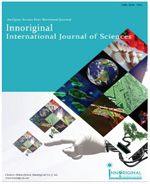ANTHELMINTIC AND ANTIDIABETIC ACTIVITIES OF GMELINA ARBOREA ROXB. BARK EXTRACTS
Abstract
Background: The plant Gmelina arborea has been traditionally used in India for several medicinal purposes like anthelmintic, diuretic, anti-inflammatory, antibacterial and antidiabetic.Aims: The aim of the present study is to explore the anthelmintic and antidiabetic activities of G. arborea bark extracts using ethanol, ethyl acetate, n-butanol and petroleum ether as solvents.Material and methods: The extracts were screened for phytochemical constituents and evaluated for their toxicity. The anthelmintic activity was evaluated on adult Indian earthworms,Pheretima posthuma. The antidiabatic activity of above extracts was evaluated in alloxan induced diabetic model of Wistar rats. Statistical analysis used: All data are verified for statistically significant by using one way ANOVA at 1 % level of significance (p < 0.01). Results and discussion: The tests for cardiac glycosides and steroids were positive for all the extracts. The ethanol and n-butanol extracts were containing most phytochemicals where as ethyl acetate extracts was containing least number of phytochemicals. All extracts were found to be non toxic to the living body. All extracts were able to show anthelmintic activity at 10 mg/ml concentration and well are comparable with the standard drugs such as piperazine citrate and albendazole. Among all the solvent extracts the n-butanol extract showed better anthelmintic activity even in comparison with both the standard drugs. All the extracts were able to reduce sugar level in blood. Ethanol extract was found to have good antidiabetic activity in comparison to other extracts. Conclusion: It can be concluded that the bark extracts of G. arborea possess anthelmintic and antidiabetic activities.ÂDownloads
Published
2015-03-01
How to Cite
nayak, bhabani shankar. (2015). ANTHELMINTIC AND ANTIDIABETIC ACTIVITIES OF GMELINA ARBOREA ROXB. BARK EXTRACTS. Innoriginal: International Journal of Sciences. Retrieved from https://innoriginal.com/index.php/iijs/article/view/24
Issue
Section
RESEARCH ARTICLE


